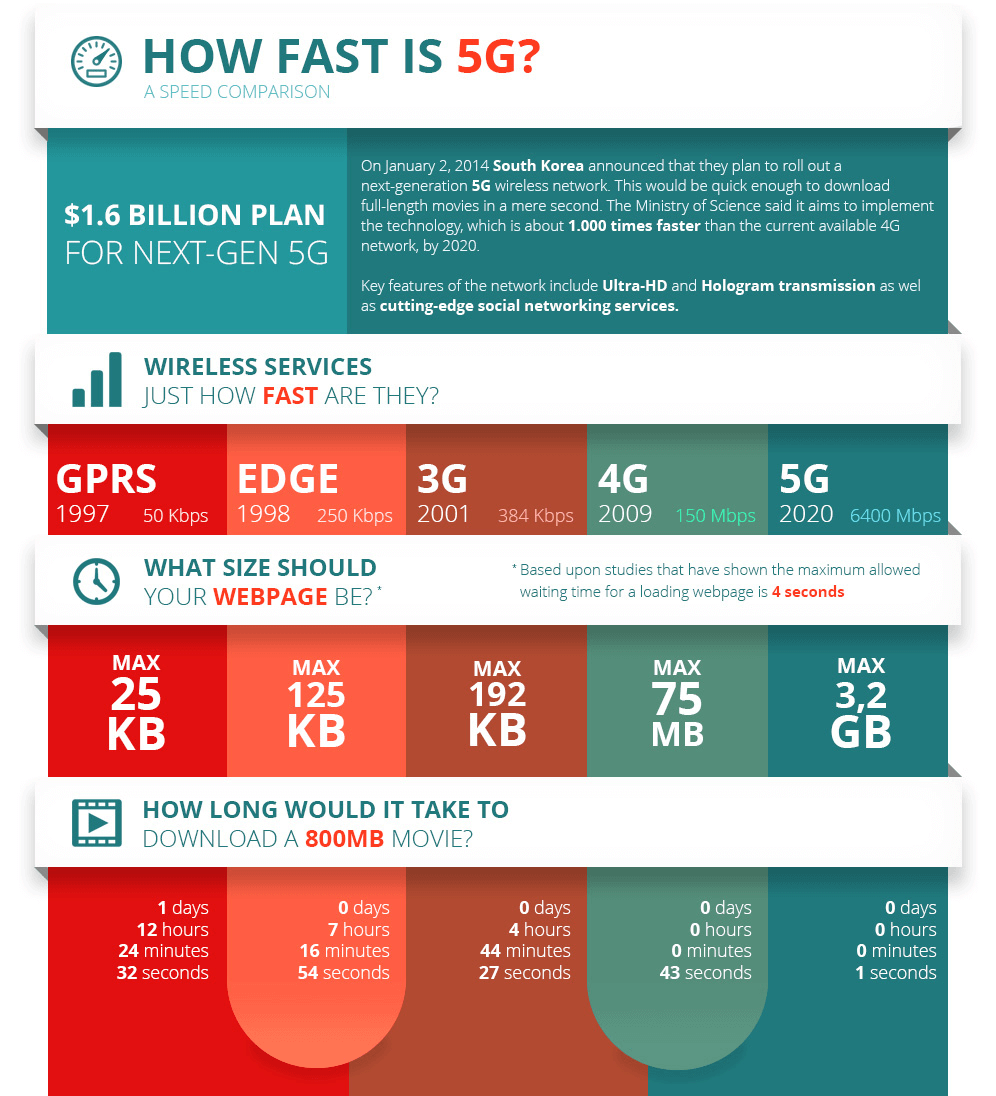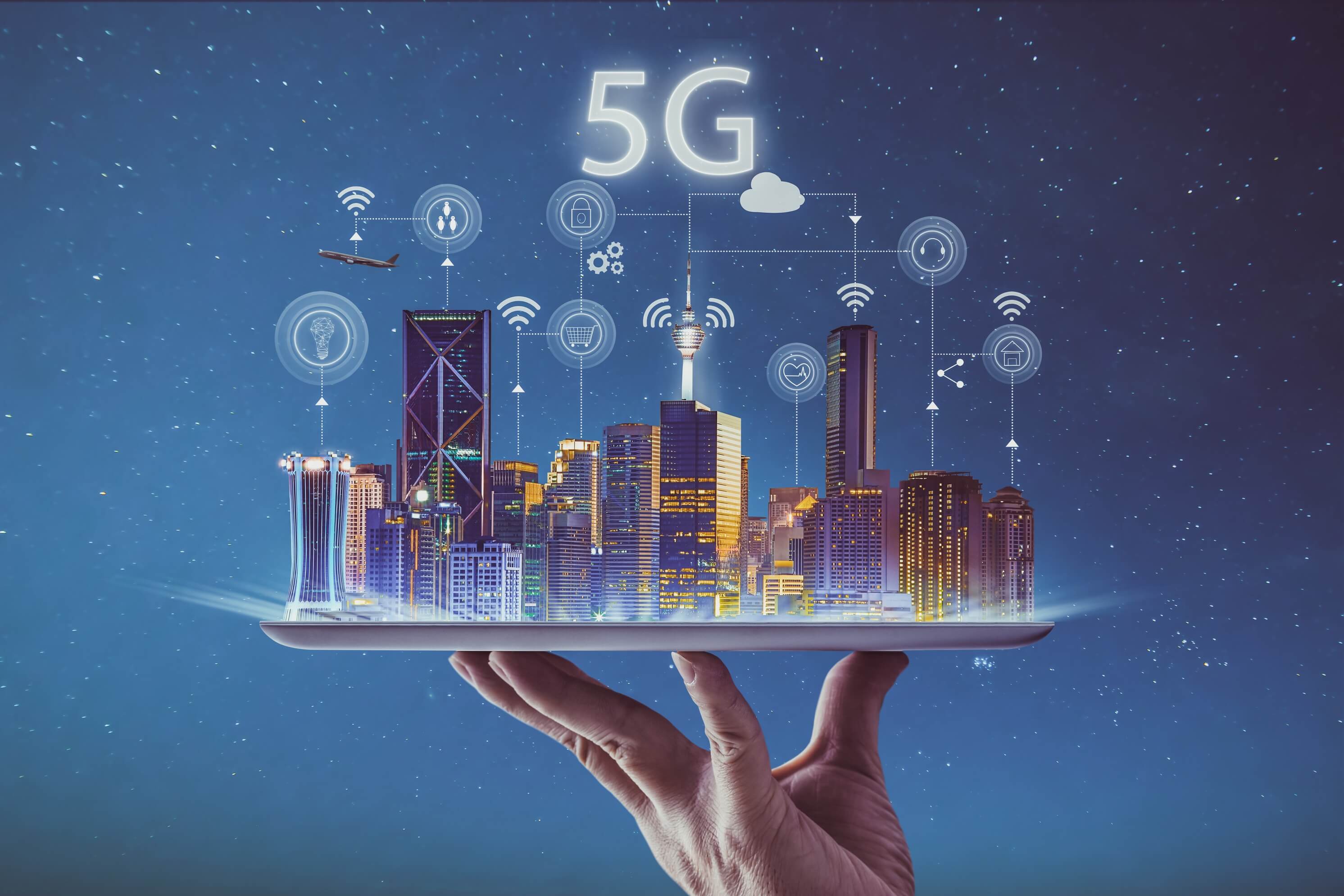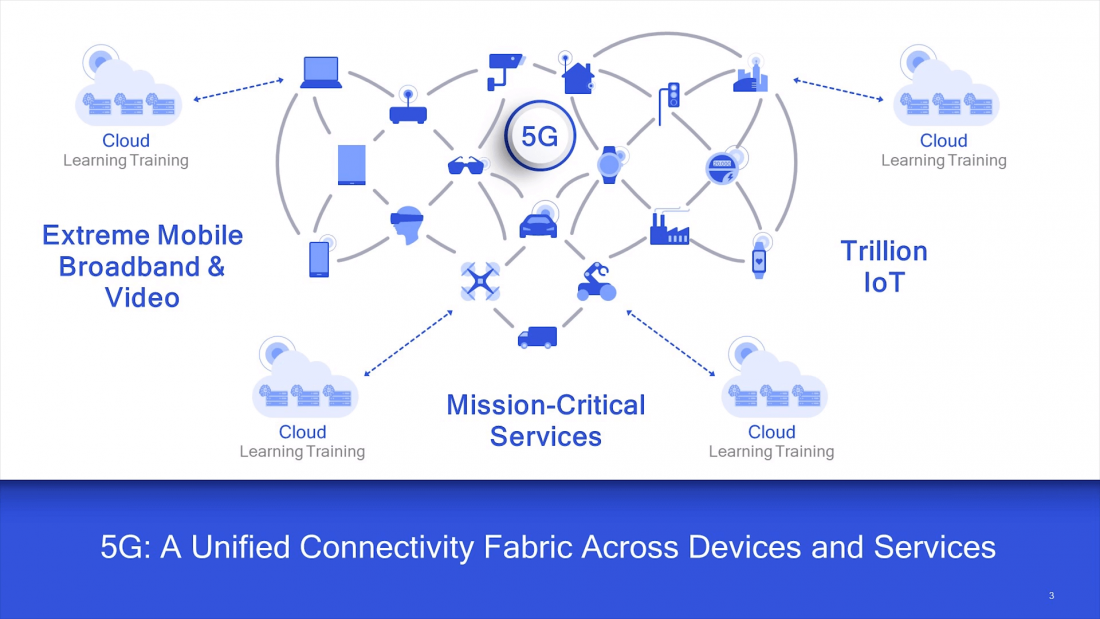Although 5G may seem like just another generational upgrade for mobile networks, touting more speed and less latency than previous iterations, the years-long migration will require an expansion of cellular networks worldwide to include millions of new antennas that will become the backbone of IoT (Internet of Things) and its billions of sensor-laden devices, from smart dust to smart cars.
The convergence of technologies such as 5G, IoT, blockchain and AI would enable a fully meshed world of wirelessly connected everything that would be seamlessly woven into the fabric of our existence, imbuing our environment with an intelligence that evaluates and responds to us, ultimately transforming how we interact with our day-to-day surroundings.
Many industries expect 5G to generate billions of dollars through currently unrealized revenue streams, providing an endless supply of applications and services to the more than four billion additional people 5G is hoped to reach. Qualcomm for example predicts that by 2035, the network will enable $12 trillion worth of goods and services and the company has claimed in the past that 5G will be "bigger than electricity," while the World Economic Forum describes the era we're entering as being "the Fourth Industrial Revolution."
That level of profitability and the potential for tracking every grain of sand on the planet has encouraged massive rollouts via public/private partnerships who are aiming to create a ubiquitous smart grid. That grid would facilitate a more connected society in line with the global sustainability goals outlined by the United Nations Sustainable Development Goals (SDGs) and supported at the 2018 Davos World Economic Forum.
The U.S. Federal government has been enthusiastic about a high-speed build-out of 5G from the very beginning, with former FCC Chairman Tom Wheeler stressing the importance of this communication upgrade to the national infrastructure, opening up large swathes of spectrum to accommodate increased speeds and many (billions of) additional devices being added to our already saturated wireless infrastructure.
"If something can be connected, it will be connected to 5G." - Former FCC Chairman Tom Wheeler
Although 5G phones won't be coming until 2019, broad scale demonstrations of early 5G networks have taken place at this year's Super Bowl in Minneapolis and Olympic Winter Games in South Korea.
Verizon's Super Bowl LII demo involved streaming live 4K VR footage over 5G to virtual reality headsets in NYC, while a collaboration between Intel, Samsung and Korean Telecom (KT) at the Olympics demonstrated self-driving vehicles as well as 100 cameras positioned 360 degrees around an ice rink that streamed video of the skaters to nearby edge servers and then over KT's Olympic 5G network.
Note: This feature was originally published on 02/25/2018. We have revised it and bumped it as part of our #ThrowbackThursday initiative.
How Fast is 5G?
The International Telecommunication Union (ITU), a division of the UN dedicated to the oversight of global telecommunications tech (radio, television, satellite, telephone and the Internet), established the IMT-2020 program (International Mobile Telecommunication for 2020 and beyond) in early 2012 to begin the global race toward 5G.
The ITU has defined key 5G performance requirements as being a peak minimum download speed of 20Gb/s (100Mb/s "user experienced rate"), a peak minimum upload of 10Gb/s (50Mb/s "user experienced rate"), as well as millisecond latencies and support for 100 devices per square meter (1 million devices per square kilometer).
By comparison, 4G's standards call for a peak download of 100Mb/s and upload of 50Mb/s. A mid 2018 report pegged T-Mobile as having the fastest 4G LTE download speeds in the U.S. topping out at 21.5Mb/s, leading Verizon's 20.5Mb/s. Meanwhile, for reference, Qualcomm's 5G modem chip (the Snapdragon X50), is said to be capable of speeds of up to 5Gb/s, a theoretical limit that exceeds the data rate of even many fiber-based wired connections.
Upgrading from 56K dial-up to cable Internet seems like an apt comparison for the performance that 5G promises to deliver and it will be made possible through a three-pronged approach to build-out efforts: 1) overall network bandwidth (support for billions of new connected devices), 2) super low latency (1ms response times), and 3) an emphasis on reliability, even in highly congested environments or indoors.

A successful deployment of 5G would bring wireless speeds capable of streaming multiple 4K videos at once without buffering or any other lag and that performance will usher in the emerging age of IoT while also opening the door for high-bandwidth products and services such as live-streaming virtual reality sporting events or receiving remote surgery.
- 5G-enabled smartphones: With 5G, consumers will almost never again need to log on to public Wi-Fi. They will also enjoy faster browsing, faster downloads, better quality video calls, UHD and 360-degree video streaming and instant cloud access than currently available.
- Always Connected PCs: With the advent of 5G networks, "always connected" PCs will be able to utilize super high speed, low latency connectivity for the next level of cloud services, as well as high-quality video conferencing, interactive gaming and increased productivity due to the flexibility to work anywhere.
- HMDs: 5G enhanced mobile broadband will further elevate virtual reality (VR), augmented reality (AR) and extended reality (XR) experiences with its increased capacity at lower cost and ultra-low latency - down to 1 millisecond.
- Mobile Broadband: Fiber speeds and massive capacity to support insatiable consumer demand for unlimited data, as well as superior mobile and home broadband internet access. - Qualcomm
This year's Mobile World Congress showed some of the potentials of these next-generation technologies, listing event themes such as The Fourth Industrial Revolution, applied artificial intelligence and content/media delivery.
Qualcomm had the most impressive demo, showing off a prototype smartphone connected to an actual 5G mmWave tower performing transfers with throughput over 4 Gbps. Their demo was utilizing the full capabilities of mmWave, and you could even see the small antenna on their prototype. When speaking to Qualcomm, they claimed their technology is right on track for smartphone integration in 2019.
Intel and Huawei were also showing off hardware prototypes, though less impressive. Intel had a weird tablet capable of streaming a not particularly intensive 4K video over 5G, while Huawei were showing off modem technology that wasn't at the same compact level as Qualcomm. That said, both companies are well in the 5G tech race, along with many others.
"The PC is a central hub for processing incredible amounts of data. 5G is coming. Not only will it bring a substantial amount of data needing processing but also new experiences for PC owners. Imagine immersing in untethered VR from anywhere in the world, or downloading a 250 megabyte file in seconds from a parking lot. Or imagine being able to continue participating in a multiplayer game as you ride in an autonomous vehicle on the way to class. Radically different. This is just a sampling of the experiences 5G will reimagine for the mobile PC. As this transformation of data continues, it's critical for PCs to be ready with 5G." - Intel
Much work remains in upgrading/meshing current mobile, fixed, optical and satellite infrastructure to accommodate 5G technologies, but many companies are striving for launch by 2019, with 5G coverage anticipated to reach around 20% of the world's population in a few years according to Ericsson.

